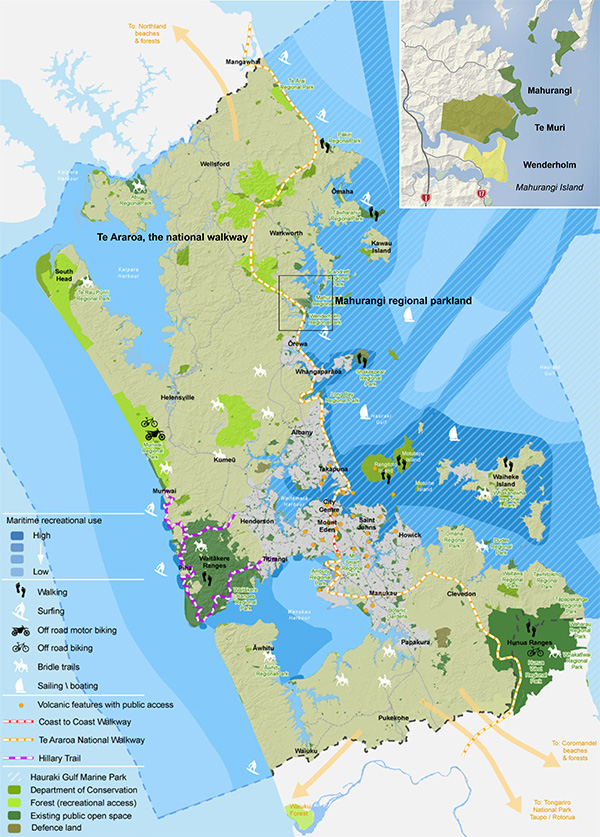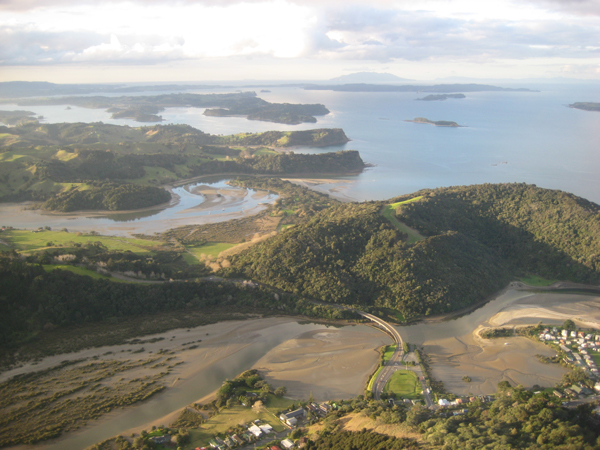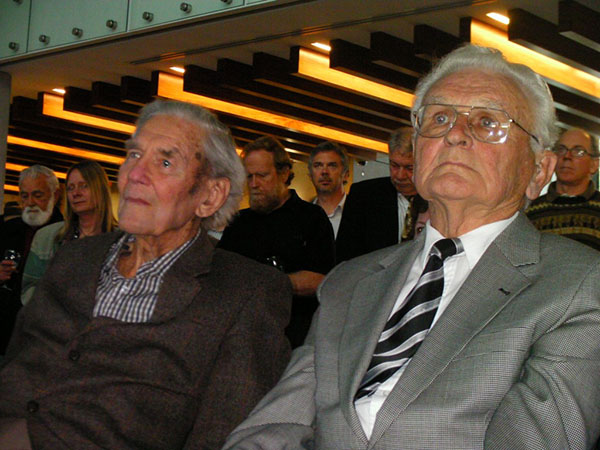Recurring regional parks rear-guard action or 50-year-plan

50-Years of Regional Park Acquisitions: From zero regional parks to an heroic 28 in 50 years is a remarkable legacy, but population growth in the region must be matched by increased access to existing regional parkland, and the acquisition of more—with the exception of the two massive ones that occupy the mountainous terrain to the west and southeast of the city, the region is not exactly smothered in regional parks. Leadership is urgently needed to produce a 50-year vision that strongly resonates with Aucklanders, and anticipates the needs of those in the future. Note that all coloured areas within the inset denote regional parkland. maps Auckland Council
By now it should be abundantly clear to all friends of regional parks. The Auckland Regional Parks network, about to begin celebrating its 50th anniversary, is seen by senior council management, and many elected representatives, as overly costly and in imminent need of restructuring.
The interests of the Aucklanders involved in the 4–5 million visits the regional parks receive every year, and the interests of future Aucklanders, need to be represented in the development of a bold plan for the network for the next 50 years. Regardless of whether existing budgets are viewed as too generous or totally inadequate, the network can’t afford to disdain the help of the community, and the help that is available extends far beyond activities such as planting trees, important as that activity can be.
The Mahurangi Coastal Trail could be considered a case study in how to hold the community at arm’s length. After decades of unsuccessful low-key attempts to interest Auckland Regional Parks in an exploration of its potential, this time last year Mahurangi Action, supported by Friends of Regional Parks, appeared before the council’s parks, recreation and sport committee. The committee was visibly excited by the proposal and Councillor Christine Fletcher, speaking from the chair, said that management would be tasked with preparing a concept plan for Te Muri, ‘and you will help us.’ Bill Burrill, chairman of Friends of Regional Parks and a previous three-term regional parks chairman, later said:
That was the best reception given to a proposal by a council committee that I have ever seen.
A year on, and the only ‘help’ that has been invited is access to the mandatory opportunity, along with every other legal citizen, of providing views for consideration in the review of the Auckland Regional Parks management plan. When the community offers a five-times more cost-effective means of providing access to new regional parkland, and volunteers to raise much of that cost from within the community, only to be held at arm’s length despite the stated desire of councillors to work together, changes to the culture of the regional parks management would seem to be called for. But rather than focus purely on culture or structure, an absolute prerequisite for any substantive change is an agreed vision for the future of the regional parks network. The starting point, surely, needs to be analysis of how Auckland region’s regional parks inventory, including Department of Conservation-owned parkland, and proximity to national parks, compares nationally and internationally. If, for example, Aucklanders enjoy twice the area of regional parks per capita of the average Italian:
- is that a fair comparison, given that Italian regional parks, on average are closer to the size of the Waitakere Ranges Regional Park than that, for example, of the combined Mahurangi, Te Muri, and Wenderholm regional parkland, and
- is that a margin that Aucklanders are happy to defend and to pay for?
Within Aotearoa, the Auckland region led the way with regional parks. Wellington followed but few other regions have. Some, arguably, don’t need them because there have an embarrassment of parkland riches provided either by national parks or by forest parks, such as Nelson City, which is bordered by the 166 000-hectare Mount Richmond Forest Park nearly four times the city’s land area, and kindly administered and paid by central government. Regardless of who pays for what, there is no excuse for wasteful practices. At South Kaipara Head, for example, two adjoining regional parks have different owners and managers. The 247-hectare Te Rau Puriri Regional Park, purchased in 2005, is owned by Auckland Council. The neighbouring and entwining 327-hectare Rototoa scenic reserve, most of which forms the region’s largest natural freshwater lake, is owned by the Department of Conservation. Given that neither the department nor the council can cash up their respective land holdings, ownership and operational budget should be rationalised in council hands, rather than have two lots of staff members and contractors regularly traipsing to the end of the peninsula. Myriad other examples abound, such as, on a much smaller scale, the clutter of adjoining Auckland Council parks, Auckland Regional Parks, and Department of Conservation land holdings at Scotts Landing—from where weddings were arbitrarily banished.

One Magnificent Regional Park: The proposed Mahurangi Coastal Trail, at a fifth of the cost of private-car-only alternative, would give Aucklanders immediate access to the $15 million acquisition in their name in 2010, and combine Mahurangi, Te Muri and Wenderholm purchases into one magnificent Mahurangi Regional Park. The potential value to the local economy of one 900-hectare regional park estate, and the new Pūhoi–Wenderholm Te Araroa section it would facilitate, is just one example of how the network can deliver greater value for Aucklanders. Most of the land pictured here is regional parkland. image ImageShack
When Judge Arnold Turner purchased Wenderholm 50 years ago, on 31 March gone, regional council staff members were inclined to sit back as though the job was done. Judge Turner had other ideas:
A fitting tribute to this spirit, during the planned year of 50th anniversary celebrations would be to announce a vision for the next 50 years of Auckland Regional Parks, and then produce that plan. That, and begin work on the Mahurangi Coastal Trail with its 300-metre long Judge Arnold Turner Footbridge—connecting the first regional park purchased with the last, by the regional council that, for all its perceived faults, was responsible for leaving Aucklanders the legacy of a world-class regional parks network. And this would just be the beginning. As well opening up Te Muri—Aucklanders are entitled to see what their $15 million has bought them—with an innovative approach, a slew other regional park acquisitions could be opened to the public in short order.
When a 10-year plan can be termed a long-term plan, 50 years may sound like an unrealistically long way to look into the future. But long-term planning is about shaping the future, not predicting it. The inescapable imperative of minimising greenhouse gas emissions means that Aucklanders will, increasingly, need to find happiness in simple, low-carbon pleasures, rather than in consumerism and travel. Access to regional parks, particularly by public transport plus a little walking, enables everyone to enjoy million-dollar views, and the splendid isolation of beaches such as Te Muri. But not only are such pleasures good for the soul, the world’s experts in noncommunicable diseases attest that these sorts of interventions are the only measures that reduce the demand for eye-wateringly expensive medical services.

Man of Action: Judge Arnold Turner, right, had Wenderholm Regional Park opened within nine months of signing its purchase. This might suggest an appropriate time limit for producing one small document, the Auckland Regional Parks 50-Year Plan. image mikelee.co.nz
The occasion of the 50th anniversary, of course, provides the rationale for a 50-year plan, and the beauty of it being such is that it would be a non-statutory process. It would have no teeth, but could nevertheless become a powerfully influential document. Being non-statutory, and being 50-year, means that it can be a broad-brushstroke, overarching plan, produced quickly and collaboratively. Much of the legwork could be done on a voluntary basis, and with the professional assistance pro bono, so that production of the 50-year plan epitomises the approach required for the new, collaborative model needed if Auckland Regional Parks network is to prosper and grow towards 2065. The last word goes to a lifelong Te Muri devotee:
The world’s most liveable city isn’t just about rail passenger transport and affordable housing. The best housing, hard infrastructure, employment opportunities and economy can only ever make a city good—maybe, very good. To be outstanding, a city needs a quality natural environment, along with civic spaces, arts, culture, and community. It needs opportunities for experiences and expression. The role and character of the regional parks is distinctly different from other open space. They provide a key component of a genuinely world-class city that is distinctly Aotearoa, and unmistakeably Auckland.
After five years of unitary and long-term planning, there is no vision and no plan for the Auckland Regional Parks. However, this deficiency can quickly be addressed, led by Auckland Council’s parks, recreation and sport committee, and aided by an adoring regional parks community.
